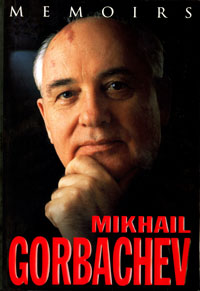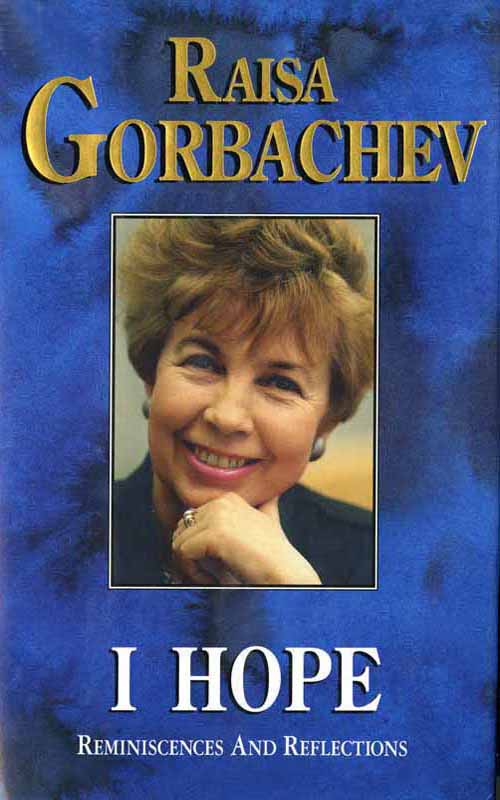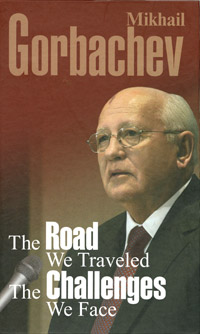12 March 2010
Archie Brown. When Gorbachev Took ChargeWhen the Soviet leader Konstantin Chernenko died on the evening of March 10, 1985, and Mikhail Gorbachev was elected by the Communist Party’s Central Committee as its general secretary less than 24 hours later, few realized that this presaged serious reform. And no one, including Mr. Gorbachev himself, realized just how far that reform — known as perestroika (reconstruction) — would go and what would be its consequences. Yet the choice of Mr. Gorbachev 25 years ago was of decisive importance. We know the views of every other member of the Politburo at the time of Chernenko’s death — from their memoirs, interviews and the official archives — and not one of them would have undertaken radical reform of the Communist system or transformed Soviet foreign policy in anything like the way Mr. Gorbachev did. There was no shortage of pundits in 1985 ready to declare that since no reformer could ever reach the top of the political ladder in the Soviet Union, it would be foolish to expect other than cosmetic change from Mr. Gorbachev. International relations specialists, including ex-foreign ministers, lined up to say that Andrei Gromyko would still be running Soviet foreign policy, so we could expect no change there. Within it was Alexander Yakovlev, who at that time was about number 500 in the formal Soviet hierarchy. Such was the accelerated promotion Mr. Gorbachev gave him, by June 1987 he was in the top five. During those years Mr. Yakovlev was an influential ally in the radicalization of the Soviet reform agenda. Mr. Gorbachev’s own ideas, given his institutional power, mattered even more. They underwent further speedy evolution while he held the highest office within the Soviet state. Mr. Gorbachev was chosen by the Politburo, and endorsed by the Central Committee, for three main reasons. The first was that with Soviet leaders dying in quick succession, annual state funerals had become an embarrassment. Even within the aged oligarchy, some could see the need for a younger and more vigorous leader. Mr. Gorbachev, who had celebrated his 54th birthday just one week earlier, exuded mental and physical energy. Second, although Mr. Gorbachev had enemies within the leadership, they did not have a plausible alternative candidate. Furthermore, Mr. Gorbachev was already the second secretary of the Central Committee and, given the hierarchical nature of the Soviet system, he was able to seize the initiative. Later he was to be accused of indecisiveness, but there was nothing hesitant about his actions on the day Chernenko died. He convened and chaired a Politburo meeting that very evening and was appointed to head the funeral commission. When Leonid Brezhnev and Yuri Andropov died, that role had been allotted to the person who subsequently became general secretary. Thus, Mr. Gorbachev was pre-selected as party leader within hours of his predecessor’s death. The foreign policy change that followed was dramatic. Far from continuing to dominate Soviet foreign policy, Gromyko — who had been foreign minister since 1957 — was moved from that office within four months of Mr. Gorbachev’s accession and replaced by a neophyte in international affairs, Eduard Shevardnadze. Within a year of becoming Soviet leader, Mr. Gorbachev had changed the entire top foreign policy team and had begun to implement what was called the New Thinking. It involved acceptance that real security meant mutual security and interdependence, agreement on arms reductions, withdrawal from Afghanistan (one of Mr. Gorbachev’s aims from the outset, and fully realized by early 1989), and constructive engagement with the West. Ronald Reagan, who had not met any of Mr. Gorbachev’s predecessors, had a summit meeting with Mr. Gorbachev in every year of his second term. The most momentous change of Soviet foreign policy was the reversal of the Brezhnev doctrine, whereby the Soviet Union had arrogated to itself the right to intervene in any Warsaw Pact country in which Communist power appeared to be threatened. Domestically, growing freedom of speech and publication was accompanied by institutional reforms. The most remarkable manifestation of the former was the serialization in a major Soviet journal of Solzhenitsyn’s “The Gulag Archipelago” in 1989. The most momentous example of the latter was the decision in 1988 to move to contested elections for a legislature with real power. In March 1989 those elections — for the Congress of People’s Deputies — were held. Although they were only semi-free, they marked a qualitative break with the past. Scores of millions of Soviet citizens were able to watch live television coverage of real debate during assembly proceedings, including criticism of the K.G.B. and the party leadership. Those elections also, however, marked the beginning of the phase of perestroika when it ceased to be a revolution from above and became a movement from below that neither Mr. Gorbachev nor his increasingly agitated conservative Communist opponents could control. But it was the new tolerance, radical reform and changed international climate that had raised expectations that could not be satisfied. Had any other member of the Politburo been chosen as leader in March 1985, the society would not have been politicized and revitalized. Highly authoritarian regimes, when prepared to use all the levers of coercion at their disposal, have ways other than liberalizing reform of staying in power. Archie Brown is emeritus professor of politics at Oxford University and the author, most recently, of “The Rise and Fall of Communism.” The New York Times // March 10.03.2010 |
|
The XXI century will be a сentury either of total all-embracing crisis or of moral and spiritual healing that will reinvigorate humankind. It is my conviction that all of us - all reasonable political leaders, all spiritual and ideological movements, all faiths - must help in this transition to a triumph of humanism and justice, in making the XXI century a century of a new human renaissance.
|
|
Русский |




